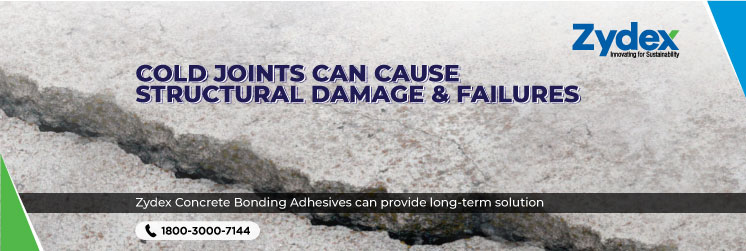Concrete Joint Sealant
To prolong the life of the structure and maintain its beauty and durability even when the most important concrete structure has damaged, the solution is to repair it and provide it with the strength of a monolithic structure.
When the concrete layer/surface/floor gets damaged, the only options available are either repairing it or building a new one after demolishing it. Demolishing and creating a new surface is not always possible due to many factors, which include the availability of space for the new construction, load on the structure, etc. Even though a new surface is created, the characteristics of the new surface will be polylithic surface.
It will never have the physical and chemical characteristics of a monolithic surface. Removal of the floor and re-pouring of it is not economic and also takes a lot of time. It will also be a waste of resources if the flooring is still structurally sound. Hence, the only option left is of adding a new/fresh layer of concrete on top of the old surface.
Cold Joints
The major requirement of the new/repaired structure is to not have any weakness or failure points. Due to a lack of concrete bonding, these structures are generally vulnerable to failure/fracture/cracking at the joints between the new and the old surface/structure. These joints are called Cold Joints.
In technical terms, a cold joint is a plane of weakness in concrete caused due to interruption/delay/new structure formation in the concreting operations. Because of these joints, the new and old surface does not act as one and the load or any impact is not evenly shared between them. In this situation, these joints act as weak points and are the most vulnerable for failure/fracture/cracking.
The same phenomenon is observed during the laying of a new PCC/RCC structure and also during tile fixing. During the extension of buildings or section-wise structure creation, the PCC/RCC structures are generally left with these cold joints, which is the main cause of structural damage and failures.
During Tile/Marble/Stone fixing operations, the same polylithic surfaces/structure are created resulting in non-monolithic strength and hence, leading to cold joints. These joints are the main cause of structural damage and failures leaving to Tile/Marble/Stone falling off the structure.
Cold Bond – Concrete Joint Sealant from Zydex
To address these structural and joint problems, Zydex provides a set of concrete or cement bonding solutions that can be applied on the surface easily for achieving the monolithic strength and properties. Cold Bond is a concrete joint sealant from Zydex that can be applied on the old surface (with just a use of brush and do not require any other equipment) and then the new construction can be carried out. This concrete or cement bonding solution will create a bond between the two surfaces that allows them to reach monolithic strength.
ZycoFix from Zydex
Similarly, Zydex provides a separate solution – ZycoFix for Tile/Marble/Stone fixing application. These solutions are very easy to use, user-friendly and can be applied by just using a brush. To apply ZycoFix Stone, Marble or Tile Adhesive, no extra application machinery is required and can be done at any location without any extra time requirement.
These applications also do not necessarily require skilled labour and can be done very quickly.
Hence, the problems of cold joints at both concrete to concrete structure or/and Tile/Marble/Stone fixing applications can easily and economically be solved using Zydex solutions.




